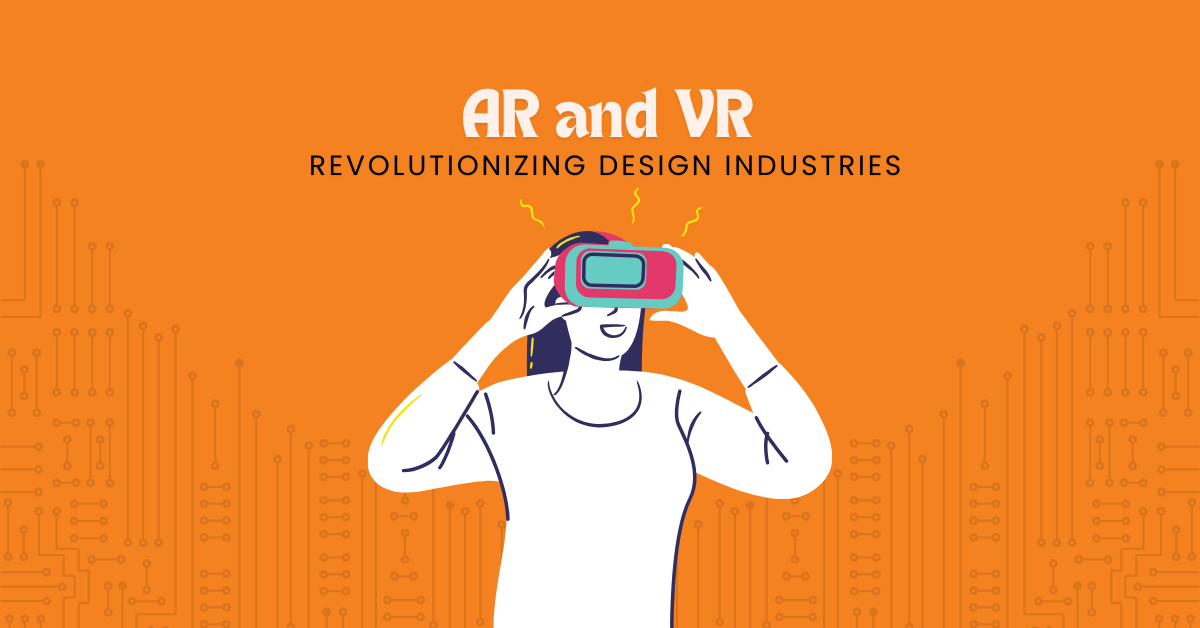How AR and VR Are Revolutionizing Design Industries
May 30, 2024

Introduction
Augmented Reality (AR) and Virtual Reality (VR) technologies are rapidly becoming essential tools in the designer’s toolkit, across a range of industries from gaming and entertainment to architecture and education. These immersive technologies offer designers unprecedented ways to visualize, create, and interact with their creations, opening up new possibilities for innovation and engagement. This blog post explores how AR and VR are being integrated into design processes, transforming traditional practices and offering new, exciting ways to connect with users.
The Impact of AR and VR on Design Industries
Gaming and Entertainment
In the gaming and entertainment industries, AR and VR are used to create immersive experiences that blur the line between reality and fiction. For instance, VR headsets allow users to step into entirely new worlds, enhancing the gaming experience with a level of depth and interaction that traditional gaming cannot match. AR, on the other hand, overlays digital elements onto the real world, as seen in popular games like Pokémon Go, which transformed local neighborhoods into interactive game environments.
Architecture and Real Estate
For architects and real estate developers, VR provides a powerful tool for visualization and presentation. It allows architects to walk clients through virtual models of their buildings, offering a realistic sense of space, texture, and scale that 2D drawings cannot convey. AR can be used on-site to superimpose proposed designs over existing spaces, helping clients and contractors visualize the end result during planning and construction phases.
Education and Training
AR and VR are also transforming education and training sectors by providing immersive learning experiences that are both engaging and effective. Medical students, for example, use VR to simulate surgical procedures, offering a hands-on learning experience without the risks associated with real-life operations. AR applications help in visualizing complex concepts in subjects like chemistry and physics, making abstract ideas more accessible and understandable.
Fashion and Retail
In the fashion and retail sectors, AR and VR technologies are reshaping how consumers interact with products. Virtual fitting rooms and AR mirrors allow customers to try on clothes virtually, reducing the need for physical fitting rooms and enhancing the shopping experience. VR can also transport customers to virtual stores, where they can browse and shop as if they were in a physical location.
Best Practices for Integrating AR and VR in Design
- User-Centric Design: Focus on the needs and experiences of the user by conducting thorough user research. This ensures the AR or VR solution enhances the user experience rather than complicates it.
- Keep It Simple: While it’s tempting to leverage every capability of AR and VR, simplicity often leads to the most engaging and successful applications. Overloading an experience with unnecessary features can overwhelm users.
- Iterative Testing: Regular testing with real users is crucial. It helps designers understand how users interact with AR or VR environments and adjust designs based on feedback.
- Cross-Disciplinary Collaboration: Successful AR and VR projects often require collaboration across various fields—design, technology, psychology, and subject matter expertise—to ensure that all aspects of the user experience are addressed.
Conclusion
The integration of Augmented Reality and Virtual Reality into design signifies a monumental shift in how professionals create, present, and interact with their work. As these technologies continue to evolve, they promise even more exciting possibilities for designers willing to embrace them. By understanding and adopting AR and VR, designers can not only enhance their capabilities but also provide experiences that are profoundly engaging and immersive.

